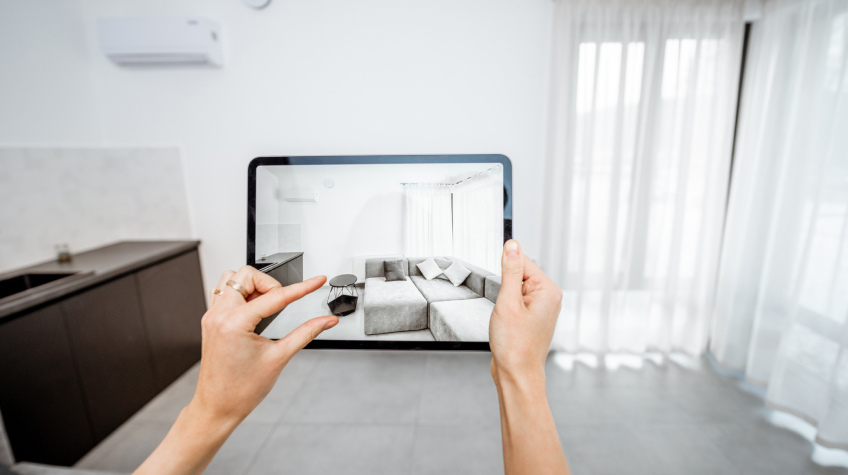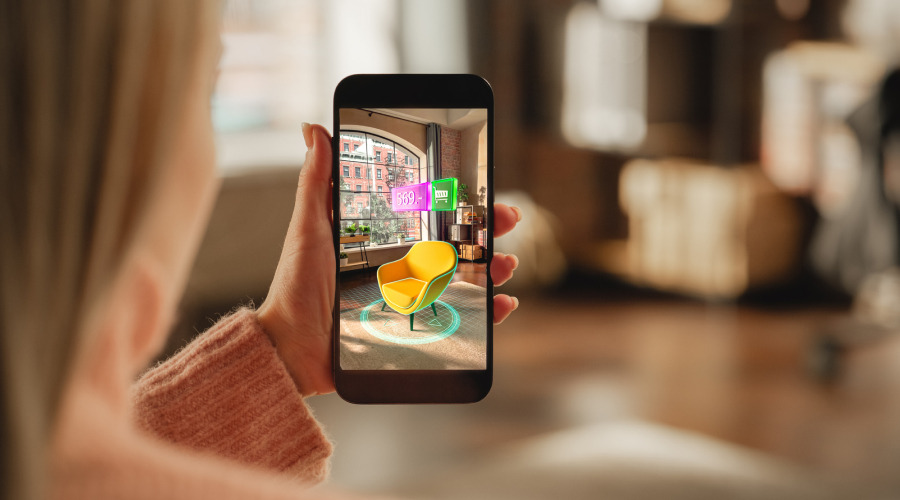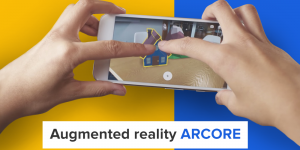
As the e-commerce industry evolves, it constantly seeks innovative solutions, such as Augmented Reality (AR), to enhance our shopping experience. AR overlays digital information and virtual elements, creating an immersive and interactive experience. This technology differs from virtual reality (VR) in that it doesn’t replace the real world but enhances it. This article will explore how AR enhances and revolutionizes how we browse, select, and purchase products.
Augmented Reality in Online Shopping
Augmented reality’s integration into the world of online shopping is transforming how consumers interact with products. AR enables shoppers to visualize products in their real environment before making a purchase decision. This level of interactivity bridges the gap between the physical and digital shopping experiences.
Functional ecommerce websites play a vital role in AR retail shopping by providing the necessary infrastructure for a seamless and enjoyable customer experience. They facilitate product visualization, mobile accessibility, integration of AR technology, efficient search and navigation, secure transactions, inventory management, customer support, and data-driven personalization, all of which contribute to the success of AR retail initiatives.
Benefits of AR in Enhancing the Online Shopping Experience
Below are the benefits of AR in enhancing online shopping experience:
1. Improved Product Visualization
One of the primary advantages of AR in online shopping is the ability to virtually try before you buy. Shoppers can place virtual furniture in their living rooms, try on virtual clothes, or see how a new appliance fits into their kitchen.
2. Enhanced Product Information

AR also provides detailed product information, often in real-time. For example, pointing your smartphone at a wine bottle can reveal information about the grape variety, region, and even food pairings.
3. Personalized Shopping Experiences
AR can tailor product recommendations based on a user’s preferences and previous behavior. This personalization enhances customer satisfaction, which leads to a higher conversion rate.
The Role of AR Apps and Tools
A wide range of AR apps and tools are available to facilitate the online shopping experience. These apps leverage the camera and sensors on smartphones and tablets to superimpose virtual elements onto the real world.
To use AR in online shopping, consumers typically download an app, point their device’s camera at a specific target (like a product image or QR code), and the AR app overlays relevant information or visualizations onto the screen.
Popular AR shopping apps offer features like 3D product visualization, virtual try-ons, and interactive product information. These apps cater to various industries, from fashion and beauty to home decor and automotive. By incorporating QR codes into AR experiences, you enable seamless access to augmented reality content, enhancing user engagement and providing a more interactive shopping experience.
Implementing AR in Your Online Store
If you’re an online retailer looking to incorporate AR, it’s essential to follow a structured approach. This involves choosing the right AR solution, creating 3D product models, and integrating AR features seamlessly into your website or app.
Research and select an AR platform or solution that aligns with your goals and budget. Some options include AR software development kits (SDKs), third-party AR apps, or custom-built solutions. AR technology companies offer AR SDKs, software packages containing tools, libraries, and APIs (Application Programming Interfaces) for developers. You have complete control over the AR experience, allowing you to align it precisely with your brand and objectives.
Third-party AR apps are pre-built AR solutions offered by companies or developers. They are ready-made, so you can implement AR features more quickly. On the other hand, custom-built AR solutions allow development teams to create a unique AR experience from the ground up.
Implementing AR should be accompanied by a robust tracking and analytics system. That way, you can measure the impact of AR on key metrics, including conversion rates, average order value, and customer engagement.
Consumer Adoption of AR in Online Shopping
Consumer attitudes towards AR in online shopping have been largely positive. Shoppers appreciate the immersive and informative experiences it offers, making them more confident in their purchasing decisions.
The adoption of AR shopping features is influenced by factors such as ease of use, device compatibility, and the perceived value it adds to the shopping process. Retailers that provide seamless AR experience tend to see higher adoption rates.
A seamless AR experience means customers can quickly access and utilize the technology without significant learning curves or technical challenges. Therefore, AR shopping features must be accessible on different devices, such as smartphones, tablets, and potentially augmented reality glasses.
Retailers can actively promote and educate customers about the benefits of AR shopping features. You can implement it through advertising, in-store signage, tutorials, or demonstrations. When customers see others successfully using AR shopping features and enjoying the benefits, it can encourage them to try it themselves. Retailers can leverage social proof through user reviews, testimonials, or social media sharing.
As AR technology advances, more innovative applications in online shopping will arise. The future holds exciting possibilities, from improved AR glasses to expanded product categories.
Challenges and Concerns
While AR has immense potential, it also presents challenges. These include technical issues, the need for high-quality 3D assets, and the cost of implementing AR solutions. AR apps often require access to a user’s camera and location data, raising concerns about privacy and security. Retailers must prioritize data protection and user consent.
Retailers can mitigate challenges and concerns by partnering with reliable AR providers, offering clear privacy policies, and continuously improving the user experience. Clearly inform users about what data will be collected, how it will be used, and why it is necessary for the AR experience. Users must have the option to accept or decline data sharing.
Success Stories and Case Studies
Several online retailers have harnessed the power of AR to great effect. Thousands of apps allow customers to visualize items for sale in their homes. Fashion brands like Adidas enable customers to try on sneakers virtually. Other examples include IKEA’s AR app, Wayfair’s AR-powered furniture placement tool, and L’Oréal’s virtual makeup try-on.
These success stories demonstrate how AR can boost sales, enhance customer engagement, and foster brand loyalty. Shoppers who engage with AR tend to have higher conversion rates and a deeper connection with brands.
Furthermore, the success stories provide valuable lessons for online retailers looking to implement AR. Key takeaways include the importance of user-friendly interfaces, seamless integration, and continuously adapting to consumer needs.
Conclusion
Augmented reality is redefining the online shopping experience. Online retailers who embrace AR stand to gain a competitive edge and create lasting customer relationships in this ever-evolving digital marketplace. Now, are you ready to embrace AR for your online retail business? If yes, then start creating a functional e-commerce website today.






